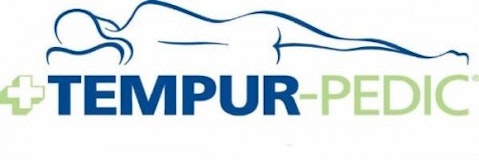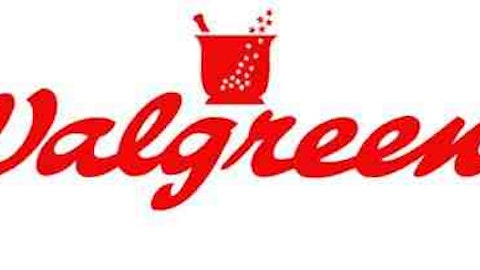Chieftain Capital Management, managed by John Shapiro, Tom Stern, and Joshua Slocum, is an investment fund with a little over $1.3 billion in assets under management. The fund was originally founded in late 2009, when Shapiro and the rest of his posse split from Glenn Greenberg. Most of Chieftain’s holdings are in stocks, particularly those that are trading at attractive valuations in relation to historical and industry norms; this can be seen by looking at the fund’s 13F portfolio.
As is seen when looking at Chieftain’s holdings, the fund has a huge interest in Tempur-Pedic International Inc. (NYSE:TPX), which accounts for almost 11% of its 13F portfolio. At the end of the second quarter, Chieftain held $147.9 million in the stock. According to a recent Form 4 filing with the SEC, Chieftain is feeling quite bullish about Tempur-Pedic, to the tune of $16.4 million. The fund bought in excess of 500,000 additional shares of the company earlier this week in three separate transactions. The purchases were carried out at roughly $31 a pop, and altogether, the move increases Chieftain’s holdings in Tempur-Pedic by 11.1%.
Consequently, it’s worth delving into the details of this transaction to determine possible motivations, and whether investors should follow Chieftain’s lead. Empirical studies have proven that investors who mimic or “monkey” the world’s most successful money managers can beat the market by 7 percentage points a year, so this isn’t something to simply shrug off. Here’s a more detailed look at this market-beating strategy.
Tempur-Pedic has had a wild ride in 2012. Since the start of the year, shares of the mattress and pillow manufacturer have lost 41.9% of their value, though the summer has been a bit kinder to the company. After hitting rock bottom around $22.39 a share, the stock has risen back above the $30 mark.
Investors became sour on Tempur-Pedic after company execs unleashed a massive guidance adjustment in early Q2, decreasing its quarterly outlook from $0.86 to $0.36 a share, shaving expectations by more than half overnight. By year’s end, the company announced it was expecting sales to remain stagnant, after they’d grown by 25% a year since 2010. While most of the blame can be given to increased competition from the likes of traditional mattress makers Sealy Corporation (NYSE:ZZ), Serta, and Simmons, Tempur-Pedic has also had a tough time cut costs in-step with guidance declines.
By the end of the year, the Street is expecting the company to reach earnings of $2.79 a share after hitting $3.18 in 2011. Compared to publicly traded competitors like Sealy, Select Comfort Corp. (NASDAQ:SCSS), Leggett & Platt, Inc. (NYSE:LEG), and Mattress Firm Holding Corp. (NASDAQ:MFRM), who are all expecting positive growth over the next twelve months, it’s easy to see why investors have been bearish.
Interestingly, Tempur-Pedic is looking rather attractive from a valuation standpoint no matter how you slice it. Shares currently trade at a lowly 10 times TTM earnings, less than half the industry average, and below Select Comfort (25.3X), Leggett & Platt (22.6X), and Mattress Firm (20.0X). Even more intriguing is that TPX’s earnings are valued at a 37.5% discount to its own 5-year historical average.
Now, before the bears cry that this stock is a value-trap, consider the following: after it’s 2012 hiccup, Tempur-Pedic expects its bottom line to expand at an average rate of 13.2% a year over the next half-decade. These aren’t world-beating projections by any means, but they are solid nonetheless.
The real kicker comes when we determine how investors are valuing this future growth, and if the PEG ratio is any indication, investors are overselling the stock quite significantly. Based on five-year EPS estimates, Tempur-Pedic currently sports a PEG of 0.76; typically any figure below 1.00 signals an undervaluation. More importantly, this is below its aforementioned competitors including: Sealy (1.00), Select Comfort (1.03), Leggett & Platt (1.51), and Mattress Firm (0.79).
Last week’s (rather cheap) $228.6 million purchase of Sealy should only give more investors more of a reason to be bullish. The move is expected to pay immediate dividends to Tempur-Pedic’s bottom line, and will give it a broader product mix outside of its NASA-inspired mattresses. As Bradley Thomas of KeyBanc Capital Markets so aptly stated, “Tempur-Pedic will firmly become a part of the normal mattress world, and will no longer be a niche player.”
In short, we know that Tempur-Pedic can generate above average-margins – operating and net are nearly four times industry averages – and the company has consistently generated double-digit earnings growth since the recession. At its current prices, however, the markets are valuing the company like an industry laggard. With TPX’s bottom line expected to get back on track in 2013, now’s a clear opportunity to buy in while shares are still cheap. Given that John Shapiro and Chieftain Capital are known throughout the hedge fund industry for their value investing pedigree, it’s tough to argue against a TPX comeback.
Other money managers who held shares of the mattress maker at the end of the second quarter included: Louis Bacon, Ken Fisher, Joel Greenblatt, Cliff Asness, and Jim Simons. Remember when we mentioned that investors who monkey the market’s best fund managers could generate consistent outperformance? There’s no better batch of value investors than the group that’s currently long Tempur-Pedic, but we’ll let you be the judge. Here’s a complete listing of the funds that are invested in the stock. Enjoy.






